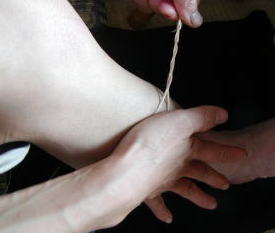palm
This is the most common method in Japan.
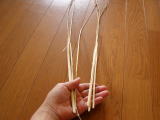
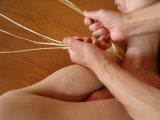
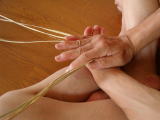
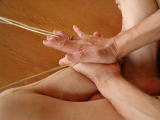
Devide the material into two parts.
Hold the bottom part of the material between the two ankles.
Place the the right hand onto the left hand ,so that the right material and the left one are crossed.
Rubbing the right hand towards the right direction so as to z-twist the two materials at a time.
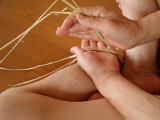
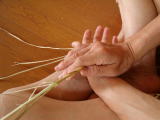
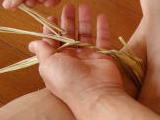
Hold the right straws with the right hand,the left straws ,with the left hand and cross them.
Back to the position of fig.3. and repeat the process.
The rope is S-twisted.
Finger
For making strings wich is comparetively fine and pliant. I have seen the Ainus did make yarns in this manner.
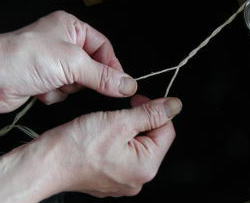
If the material is short and thin, it can be twisted with the tip of the fingers as the photo shows.
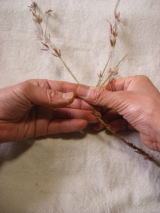
Thigh
For making fine amd pliant materials. This method is seen in Korea etc.
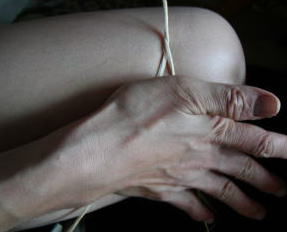
Shin
In New Zealand they make ropes of New Zealand flax.
